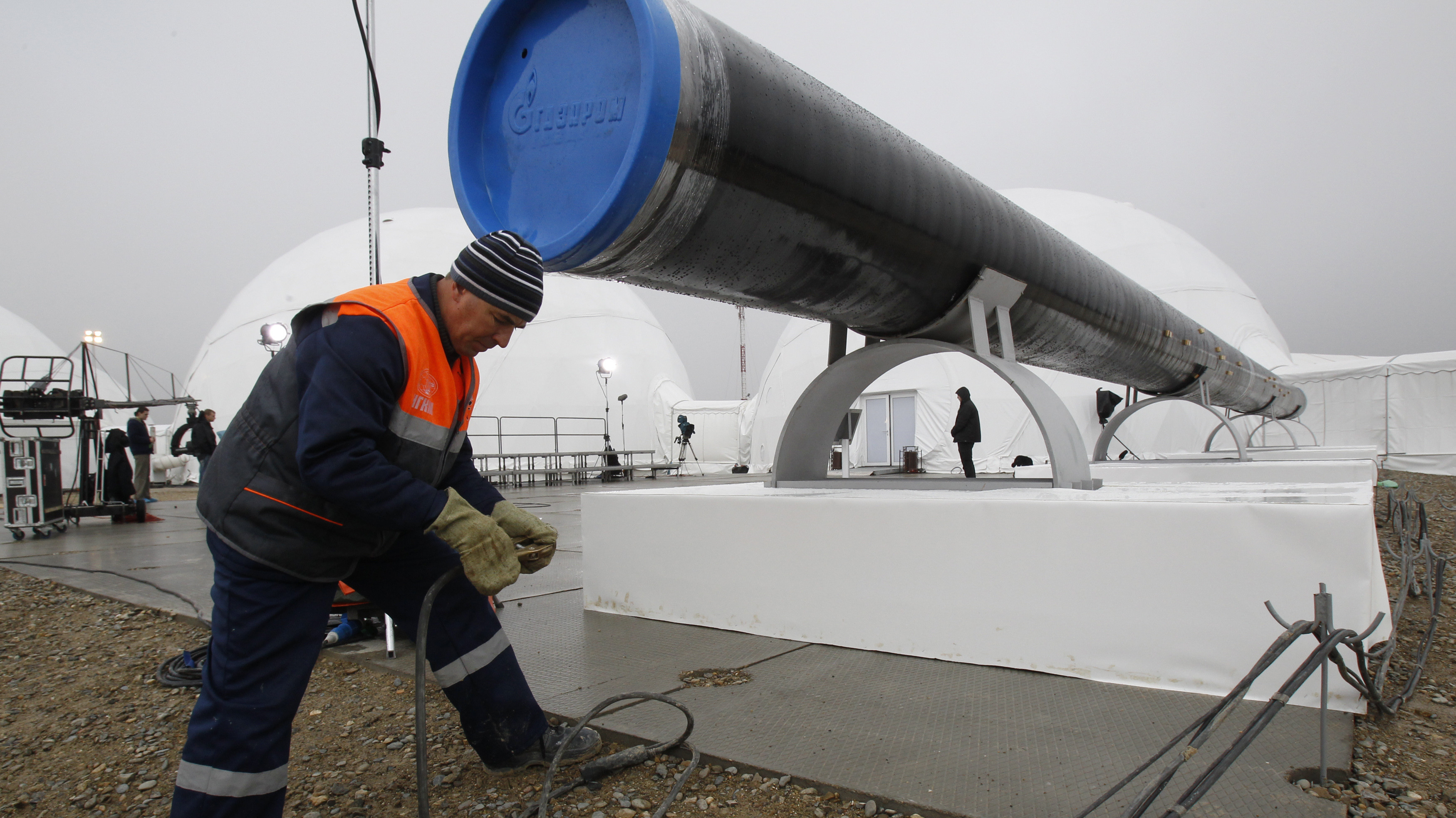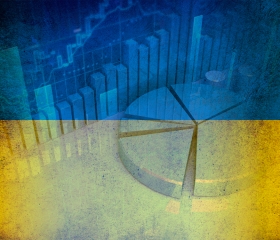In a nutshell, there will only be changes in the degree of cooperation, but not in the vector itself. In the 1970s-1980s, Western Europe needed Soviet hydrocarbons for two main reasons: 1) they formed the economic component of detente (trade, instead of war), and 2) were seen as an alternative to the Middle East, which was then the most unstable region in terms of energy geopolitics (“oil shocks” and so forth). In the 1990s and early 2000s, Europe closed its eyes to its energy dependence on Russia, expecting the country to become a kind of second Norway, i.e. a politically neutral energy resource base for the EU (Norwegian exports now make up 24 percent of EU domestic gas consumption).
Secondly, oil prices were so low that most alternative energy projects in Europe were unprofitable. And thirdly, there was no choice among exporting countries. Sometime in the mid-2000s, the EU finally realized that Russia was unlikely to become Norway. At the same time, oil prices were skyrocketing (causing a boom in renewable energy), new LNG exporters sprouted up like mushrooms after the summer rains and, no less importantly, the EU market reached a point of saturation and stopped growing (EU gas consumption has been stagnating since 2006, while oil consumption has fallen).
At the same time, the first transit crisis in Ukraine occurred during the winter of 2005-2006, which was then followed by an immeasurably more devastating crisis in January 2009. It was then that the political decision was made to gradually reduce gas purchases from Russia. Why does gas get so much attention? The answer lies in the fact that the technological complexity of quickly switching over from gas to other sources of energy is fundamentally greater than from oil and oil products (Russia sells an insignificant amount of electricity only to Finland and the Baltic states, so this does not matter much for the EU).
Therefore, the problems of energy cooperation between Russia and the EU are mostly gas-related, only further highlighting the contrast with much less troublesome and more stable relationships over supplies of oil, oil products, coal, and electricity or the participation of European companies (E.ON, Enel, Fortum) in the Russian power generation sector.
The energy sector is characterized by significant inertia, and consequently, reacts little if at all to political developments. Therefore, I would rate the probability of direct, formalized trade sanctions by the EU on Russian energy resources exports as extremely low. The EU’s share of exports of oil and oil products makes up about 88 percent; natural gas – 70 percent; coal – 50 percent. Any comparison with Iran, where the 2012-2013 oil embargoes have proven to be quite successful, is irrelevant, since even in its best years, Iran delivered to the EU approximately four times less oil than Russia, let alone gas or c/oal. The effects are quite different.
What will the future bring? The answer is slow strangulation. This is actually what EU leaders agreed upon during the two-day summit on March 21-22, 2014. No fast, simple, let alone cheap solution exists. It is obvious that the EU will continue to promote power generation based on renewable energy sources and coal, increase LNG imports, and introduce energy-efficient equipment on a massive scale. It is even possible that nuclear power will be somewhat rehabilitated and that shale gas development will receive additional backing, albeit somewhat limited.
However, all this is likely to produce a decisive effect no sooner than by 2020-2025. Besides, sanctions will be costly, and threaten to significantly undermine the economic competitiveness of the EU relative to the United States in the first place. And in recent years, the EU’s competitiveness has already declined on account of drastic imbalances in energy prices on the two markets. Suffice it to say, that in 2013 the average wholesale gas price at Henry Hub in the U.S. was 133.1 USD/thousand cubic meters, while the one for NCG in Germany was 387.7 USD. The same situation has existed for several years in a row during the latest economic depression.
In other words, Russia, in my opinion, should be prepared for a slow but steady reduction in energy exports (mainly gas and partially oil) to the EU. Anyway, I am taking this threat seriously. In fact, this is the same effect that sanctions will have, although considerably extended over time. At first glance it seems reasonable to give up illusions about increased exports of Russian gas to the EU, which Gazprom continues to cherish, despite obviously negative signals. Of course, under no scenario will Russian gas imports, let alone oil exports, will be halted completely in the foreseeable future. But in the long term (after 2025) we should expect them halving in volume if economic considerations in the EU fail to prevail over geopolitics.
Relations between Russia and Ukraine will not change quickly in the short-term. Ukraine has already halved its imports of Russian gas (28 billion metric tons in 2013, taking into account reverse supplies from the EU, against 56.2 billion m3 in 2008). The reductions have reached their limit, while expecting a growth in imports, given Russia’s removal of the discount on gas prices for Ukraine. Trying to reduce purchases of Russian gas in every possible way has appeared to be the common objective of the Yushchenko, Yanukovych, and revolutionary governments.
At the same time the possibility exists that rates for gas transit via Ukraine will increase (they are currently 3.4 USD for 1 thousand cubic meters per 100 km). Given the economic situation in Ukraine, the probability of a transit crisis during winter is high. The future of Ukraine’s gas transportation system depends entirely on whether the South Stream Gas Pipeline Project is implemented or not. As for the other energy assets of Ukraine (oil refineries, coal mines, the power industry, etc.), their economic attractiveness, frankly speaking, is not great enough for investors to start queuing up. Therefore, Russian investors (LUKOIL, Rosneft, etc.) are unlikely to face a rash of serious discrimination, except, perhaps, in the case of gaining access to the privatization of the national joint stock company Naftogaz Ukrainy.
The South Stream project appears to be the only litmus paper test this year that might reveal the degree of the EU’s determination to restrain its energy relations with Russia (the first gas supplies via South Stream are to happen in late 2015, while in 2013, the construction of the overland section of the South Stream gas pipeline began in Russia, Bulgaria and Serbia). Significant EU reductions of Russian gas imports are unlikely to happen in 2013. And if winter, this year or next, happens to be frigid, imports might even grow. However, this growth might be quite misleading, since the real state of affairs is only reflected by the degree of investment.
The peculiarity of the South Stream Project (in contrast to Nabucco and its subsequent modifications) lies in the fact that reaching new market outlets is far from being its priority goal. Its main purpose is to redirect gas transit flows via Ukraine (according to the Ukrainian data, 86.1 billion metric tons in 2013 against 119.6 billion m3 in 2008), bypassing the latter.
Today the European Union is facing an unconventional choice. The first option is to “bury” the South Stream Project for the purpose of rendering political and economic support to Ukraine and run the anticipated risk of transit crises similar to those in 2009 and the problem of reconstructing the gas transportation system in Ukraine (even by conservative estimate, Naftogaz Ukrainy is worth at least $ 5.3 billion). The other option is to allow the South Stream Project be implemented, thereby avoiding such risks. At the same time, this scenario will significantly undermine the economic situation in Ukraine (in 2013 the country’s revenue from gas transit amounted to nearly 3.6 billion dollars), as well as strengthen Russia's position in the Balkans, especially in the countries of former Yugoslavia. We can only guess what will prevail – economic pragmatism or political
expediency.
I would also like to draw attention to the fact that the European Commission expressed displeasure with the South Stream Project several months before the escalation of the situation in Ukraine. In early December 2013, it sent an official letter to the Russian government, insisting on the need to renegotiate intergovernmental agreements concluded within the framework of the Project with the European transit countries, namely Austria, Bulgaria, Hungary, Greece, Slovenia, and Croatia, and harmonize them with the requirements of the Third Energy Package. In other words, clouds began to gather over the South Stream, just as what had happened over the OPAL pipeline (the extension of the Nord Stream pipeline in Germany), long before current developments. The Crimean crisis has only added fuel to the fire.
Prepared for publication by RIAC Program Coordinator Daria Khaspekova


.jpg)




